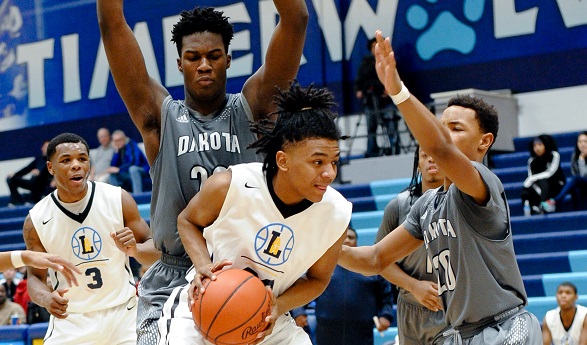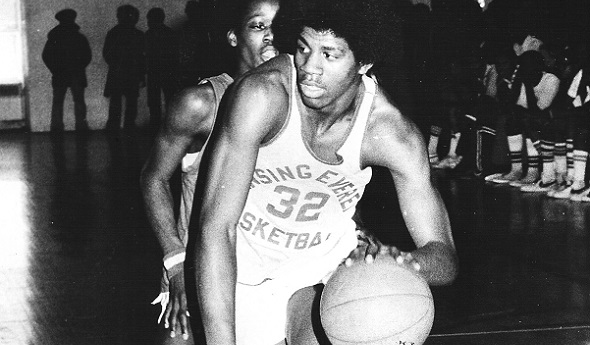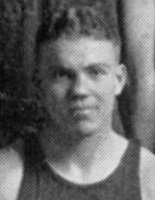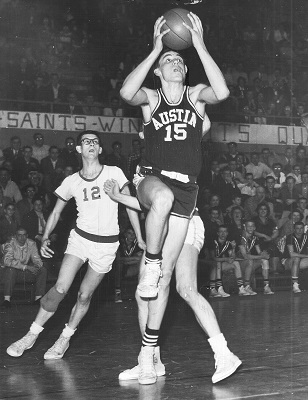
Breslin Bound: Boys District Preview
March 7, 2016
By Geoff Kimmerly
Second Half editor
A total of 11 boys basketball teams head into the MHSAA Tournament today with perfect records.
But there are plenty of others expected to make strong pushes toward a trip to East Lansing in a little more than two weeks.
Below is a look at four teams from each class that look good to be in the hunt. Follow all of the scores and brackets in real time at MHSAA.com, and click for a glance at every team with three or fewer losses heading into the postseason.
Class A
Canton (20-0) – The Chiefs have improved from 15 to 16 to now 20 wins over the last three seasons, and after repeating as Kensington Lakes Activities Association South champions went on to win the league’s overall title with an overtime victory over Walled Lake Western. Canton also put up an incredible 35-point win in early January over Grosse Pointe South, which finished 17-3.
Detroit U-D Jesuit (20-0) – The Cubs might be the favorites after making the Class A Semifinals last season and losing to eventual champion Detroit Western International. Led by Mr. Basketball finalist guard Cassius Winston, U-D Jesuit has beaten an impressive slate including Class C contenders Flint Beecher and Detroit Allen Academy and last week Detroit East English by 16 points.
East Lansing (19-0) – A young Trojans team will have to be careful in a District featuring tough familiar opponents. But led by sophomore Brandon Johns, arguably the best in his class in the state, East Lansing hasn’t had a ton of trouble yet, with only five wins by fewer than 10 points (although that includes two in overtime).
Macomb Dakota (20-0) – The Cougars did go 21-3 before falling in the Regional Final last season, but haven’t been considered this strong of a contender arguably ever. They avenged that postseason loss on Dec. 15 by downing Clarkston by 11, and nonleague wins against Lansing Everett and Saginaw Arthur Hill also provided valuable experience against unfamiliar but solid opponents.
Class B
Lansing Catholic (18-1) – A game against East Lansing last week that would have been telling was canceled because of bad weather, but the Cougars have shown a great combination of post strength and perimeter play while facing most of the rest of the Lansing area’s best. The loss came to rival Williamston by three after Lansing Catholic won the first meeting in overtime by three.
New Haven (18-2) – Unlike last season, New Haven enters the tournament with losses – its first during 2014-15 didn't come until the Quarterfinal. But those defeats this time have come against Class A schools Utica Ford and contender East English (16-4), and the Rockets built their record against a Class A-heavy schedule.
Onsted (19-0) – Mr. Basketball candidate and sizable center Austin Davis gets most of the attention, and with great reason. But he’s also got plenty of help, especially in a veteran backcourt, and it’s paid off in a league with three teams that have won at least 14 games; Hillsdale’s only losses were twice to the Wildcats.
Wyoming Godwin Heights (17-3) – The reigning Class B champion has two more losses heading into the tournament this season than a year ago. But the three defeats came to Class A teams that have won 15, 14 and 19 games, respectively. Tonight’s opponent, Wayland (17-2) provides another tough challenge out of the gate.
Class C
Detroit Allen Academy (18-2) – Allen has taken a big jump from 11-11 last year playing a schedule that hardly resembles the typical for a Class C team. The Wildcats’ best wins were arguably against Class B River Rouge (17-3) by 11, Class A Saginaw Arthur Hill (14-5) by 20 and Class A Detroit Renaissance (16-4) by four.
Flint Beecher (17-2) – The Class C champion three of the last four seasons prepares by facing a number of larger power programs, and this winter was no different; Beecher beat East English by three but also played and lost to reigning Class A champion Detroit Western International and likely Class A favorite Detroit U-D Jesuit.
Kalamazoo Hackett (20-0) – Hackett earns the mention among four undefeated Class C teams because it saw the toughest competition; four of six other teams in the Southwestern Athletic Conference Valley won at least 10 games, and Kalamazoo Christian’s only losses were twice to the Fighting Irish. All of that said, only Christian once and Schoolcraft twice got within 10 points of Hackett this winter.
Southfield Christian (18-2) – The Eagles are regulars in later rounds of the tournament and fell to Beecher in a Regional Semifinal last season. They’ve again prepped for a long run by facing bigger opponents, with a win over Class A Belleville (16-4) and Southfield and that only loss by a point in overtime in December to Class A West Bloomfield.
Class D
Bellaire (19-1) – Aside from a loss to Class C East Jordan in December, Bellaire has dominated winning a Ski Valley Conference featuring five teams with at least 10 wins including Class C Johannesburg-Lewiston (18-2) and Class D Onaway (16-4). The Eagles won their four games against those two opponents all by double figures.
Frankfort (18-2) – The Panthers have made it to at least the Quarterfinals the last three seasons and the Semifinals in 2014, and there’s little reason not to anticipate a similar run. The losses this winter were in overtime to undefeated Class C contender McBain and also-Class C Traverse City St. Francis, and Frankfort has beaten its share of larger schools too.
Hillman (20-0) – The Tigers have made the Regional Finals three straight seasons and played in a Quarterfinal last year, losing to eventual champion Powers North Central. They opened this winter with a 17-point win against Cedarville and have allowed only one opponent to come closer than 11.
Powers North Central (20-0) – The Jets have won 47 straight games and 72 of their last 73 with junior Jason Whitens again leading a group that includes more teammates from their MHSAA 8-player football champion. North Central handed Crystal Falls Forest Park its only two losses and beat Class B Menominee (16-4); no other opponents came close.
PHOTO: Macomb Dakota defenders surround a Saginaw Arthur Hill player working to get to the hoop during a game earlier this season. (Click to see more at HighSchoolSportsScene.com.)

'Retro' Award Rewards 1st Hoops Legends
January 4, 2017
By Ron Pesch
Special for Second Half
Before the start of the MHSAA’s 2009 Boys Basketball finals, Basketball Coaches Association of Michigan director Tom Hursey stopped by my seat at Michigan State University’s Breslin Center to say hello.
Our chat would alter a decade of my Michigan winters.
Somewhere between hello and goodbye, our chat included conversation on one of my favorite BCAM ventures. In 1981, the Michigan High School Basketball Coaches Association, as BCAM was once known, named its first “Mr. Basketball.” I was two years out of high school when Lansing Eastern’s Sam Vincent edged Eric Turner of Flint Central for that first award. Designed to honor the state’s top senior, the award was named in honor of Detroit Free Press writer Hal Schram. “The Swami,” as he was nicknamed, Schram began covering high school sports for the newspaper in 1945.
The 2009 selection was 6-foot-9 Derrick Nix of Detroit Pershing. I mentioned my affinity for the Mr. Basketball program to Tom, but stated that I always thought it a crime that the award didn’t start years earlier, at least when Michigan hoop fans became infatuated with a kid nicknamed “Magic.”
Earvin Johnson prepped at Lansing Everett and was the talk of the state in basketball circles before becoming a household name during his time at Michigan State and with the Los Angeles Lakers. Earlier this year, ESPN named Johnson the greatest point guard to ever play the game. Tom noted that “Magic” was really the inspiration for the “Mr. Basketball” award.
Then I posed a question to Tom.
What about creating a “new” award, designed to honor those greats from the past?
As my hobby of researching the history of high school sports in Michigan and beyond had grown over the years, I’d found the Great Lakes state had always produced shining stars on the basketball court. The crime was that the “Mr. Basketball” award hadn’t been launched many years before.
Harry Kipke, was perhaps the state’s first true basketball star. He won 12 varsity letters at Lansing Central and guided the basketball team to the semifinal round of the state tournament in 1920 as a senior, before heading to the University of Michigan where he earned letters in football, basketball and baseball. After stops at the University of Missouri and Michigan State, Kipke would serve as Michigan’s football coach, guiding the Wolverines to two national gridiron championships.
 As a junior, the basketball antics of Grand Rapids Union’s Royal “Red” Cherry captured the state’s attention when he led Union to the state basketball championship. Considered the best all-around player of the tournament, Cherry led the team to a second consecutive title as a senior. He, too, attended Michigan, earning laurels on the basketball court and the baseball diamond.
As a junior, the basketball antics of Grand Rapids Union’s Royal “Red” Cherry captured the state’s attention when he led Union to the state basketball championship. Considered the best all-around player of the tournament, Cherry led the team to a second consecutive title as a senior. He, too, attended Michigan, earning laurels on the basketball court and the baseball diamond.
Many other legends of the hardcourt populated Michigan’s past: Saginaw’s Ernie Thompson; the Burton brothers, M.C. and Ed, of Muskegon Heights; Detroit Pershing’s Ralph Simpson and Spencer Haywood; Dave DeBusschere of Detroit Austin Catholic; Willie Betts and Blanche Martin of River Rouge; Ron Kramer of East Detroit; Benton Harbor’s Chet Walker and L.C. Bowen.
After a few weeks of research, discussion and thought, Tom agreed, and over the next several months the framework for the “Retro Mr. Basketball” project was developed
The idea was to try and mimic the current model. Only seniors, and their high school basketball careers, should be considered. While any “senior” player would be eligible, a ballot of the state’s elite would comprise the candidates for the award. Like their modern-day equivalents, where the events of life that would follow high school graduation had yet to occur, post-high school life would be disregarded as much as possible for “Retro” candidates.
Finally, the program would follow a 10-year arc, kicking off in the spring of 2010. This December marks my eighth year of research tied to the mission. Two more will follow.
Since the Schram “Mr. Basketball” award began in 1981, the “Retro” award would honor basketball players from the years 1920 through 1980. That first year, a ballot comprised of players from the years that ended in zero - 1920, 1930, 1940, 1950, 1960, 1970 and 1980 – was created. A senior for each year would be named the winner of the “Retro” award. That meant with the selection of “Mr. Basketball” and the six “Retro” winners for the years 1929, 1939, 1949, 1959, 1969 and 1979, scheduled for the spring of 2019, BCAM would be able to point to a combined list of Mr. Basketballs totaling 100 of the state’s finest.
To identify each year’s award winner, a committee of veteran BCAM members was formed to study a ballot of candidates and select a winner.
Technology, combined with scanning old-fashioned reels of microfilm, has helped with research of potential candidates. In those very early years, personal statistics were rarely kept. Rather, an assessment of a player’s skills, tied to the position he played, often served as a means to identify an area’s top athletes. Tournament play was often the only time an athlete’s abilities were on display to a larger audience. Scouring newspaper articles for all-tournament teams and yearbooks for additional details and years of study helped uncover the state’s top senior players. Understanding the game and its evolution was important. The center jump after each basket emphasized the importance of a tall, skilled center in those games played before the winter of 1938-39.
Beginning in 1935, all-state teams began to appear in state newspapers. Eventually, the Detroit Free Press, the Detroit Times, the Detroit News, The Associated Press and even United Press International became involved in identifying the state’s top basketball players and naming all-state squads. Much work is involved in parsing the 15,811 names (not including honorable mentions) found in those lists. When duplicates are removed, the names of 8,430 prep players remain spread over the 61 years that mark the “Retro” field of possible candidates.
Research to identify seniors, players named by multiple media outlets, and mini biographies are compiled for the top players. The field of candidates is then narrowed to 10 or fewer. Over state championship weekend, the ballots are brought to the BCAM committee for discussion, and finalists are named for each year. Finally, one player is named for each eligible season.
Like the modern day award, the selection may create some controversy. Some amazing ballplayers have landed on the finalist list, but were denied the Hal Schram Mr. Basketball award: Traverse City’s Dan Majerle, Roy Marble of Flint Beecher, Detroit Southwestern’s Jalen Rose, Detroit Northern’s Derrick Coleman and Draymond Green of Saginaw are among a few.
 The same applies to the “Retro” list. Fennville’s Richie Jordan, Robert “Bubbles” Hawkins from Detroit Pershing, Dennis Bankey of Detroit St. Thomas, Bill Chmielewski of Detroit Redeemer, Highland Park’s Terry Duerod and Detroit Kettering’s Lindsay Hairston all have been honored on the finalist lists, but fell short of the top prize.
The same applies to the “Retro” list. Fennville’s Richie Jordan, Robert “Bubbles” Hawkins from Detroit Pershing, Dennis Bankey of Detroit St. Thomas, Bill Chmielewski of Detroit Redeemer, Highland Park’s Terry Duerod and Detroit Kettering’s Lindsay Hairston all have been honored on the finalist lists, but fell short of the top prize.
In many cases, Michigan was loaded with prep talent – it’s tough to name Roy Marble Mr. Basketball when Flint Northwestern’s Glen Rice was on the same ballot, or Rose the state’s best when Country Day’s Chris Webber was another candidate. While the “Fennville Flash” amazed the state with his eye-popping statistics in 1965, Bowen led Benton Harbor to back-to-back Class A titles. Named an all-state basketball player as a junior, Hairston grew an inch and improved his game as a senior, but Pontiac Central’s “Campy” Russell dominated headlines that season, and was the “Retro” Mr. Basketball selection for 1971.
In some cases, it’s a challenge to look at the final balloting results without judging selections based on future basketball success. That certainly is the case with 2008. That season, Michigan’s Mr. Basketball award went to 6-foot guard Brad Redford, who posted incredible back-to-back high school seasons at Frankenmuth. Runner-up to the award that year was Saginaw’s Green. Considering Green’s success in the NBA, that’s hard for many to believe.
While the debates may never be settled, the beauty of Schram and “Retro” Mr. Basketball balloting can be found in the argument. With those disputes, people recall, research and learn about Michigan’s incredible prep basketball past.
The remaining three years of the “Retro” project will include many more legends of Michigan High School basketball, including, among others, DeBusschere, Walker, Haywood and Simpson.
This season, that “Magic” kid will be one of the names among the mix. Forty years after high school graduation, will he earn the honor that eluded him in high school, only because the honor didn’t yet exist?
 Ron Pesch has taken an active role in researching the history of MHSAA events since 1985 and began writing for MHSAA Finals programs in 1986, adding additional features and "flashbacks" in 1992. He inherited the title of MHSAA historian from the late Dick Kishpaugh following the 1993-94 school year, and resides in Muskegon. Contact him at [email protected] with ideas for historical articles.
Ron Pesch has taken an active role in researching the history of MHSAA events since 1985 and began writing for MHSAA Finals programs in 1986, adding additional features and "flashbacks" in 1992. He inherited the title of MHSAA historian from the late Dick Kishpaugh following the 1993-94 school year, and resides in Muskegon. Contact him at [email protected] with ideas for historical articles.
PHOTOS: (Top) Lansing Everett’s Earvin Johnson drives around a defender during his celebrated high school career. (Middle) Grand Rapids Union’s Royal “Red” Cherry. (Below) Detroit Austin Catholic’s Dave DeBusschere drives to the hoop as an opponent gets in position to rebound. (Photos from MHSAA and Ron Pesch historical files.)

